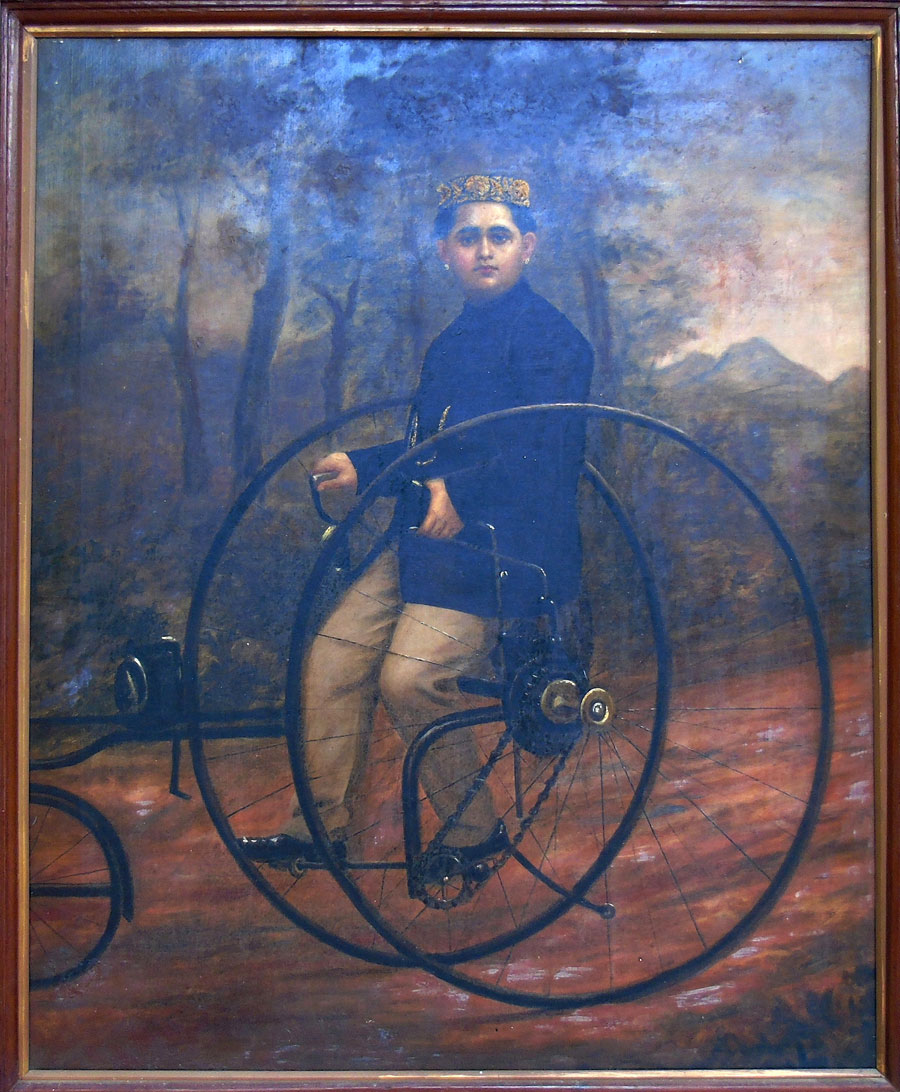
Prince on Tricycle
This painting hangs in one of the erstwhile Ammaveedu bungalows in Thiruvananthapuram and is a family heirloom that was handed down from father to daughter. The subject in this painting, B A Prince, was the great grandfather of the present owner of the painting. This appears to be one of the paintings done by Ravi Varma of the Prince during one of their travels together.
The painting is ‘Unsigned’ but bears characteristics and technical similarities to a 'work done by the hand of Raja Ravi Varma.’
The Foundation was invited to examine the painting, however the work has not been subjected to x-ray or any physical or chemical testing.
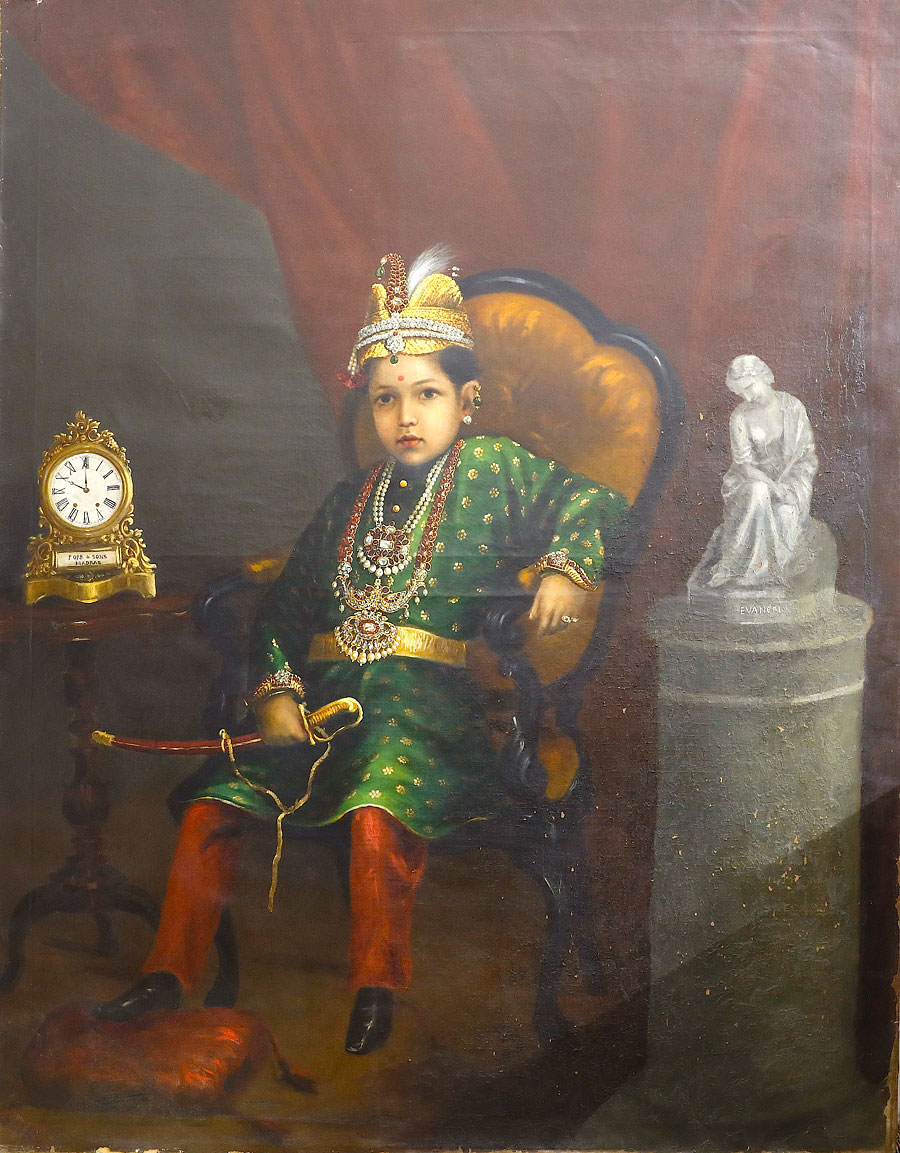
Marthanda Bhairava Tondiaman
Marthanda Bhairava Tondaiman of Pudukkottai was the Crown Prince, destined to be the Maharaja.
Ravi Varma had earlier made a figurine, a Chinese figurine on the right side of the canvas and painted it. It’s possible after finishing he realised that it was almost like a straight line between the figurine and the tip of the feather on Marthanda Tondiaman’s crown. So Ravi Varma extended the curtain and covered the figurine and then painted the Evangelina statue below so that the asymmetry sets a rhythm.
Over a century later, and when oil paint naturally dries, it tends to become transparent. So through the transparency this figurine, this Chinese figurine was revealed and it was noticeable in the right kind of light. During the process of x-ray, it was crystal clear what was underneath and what was on top.
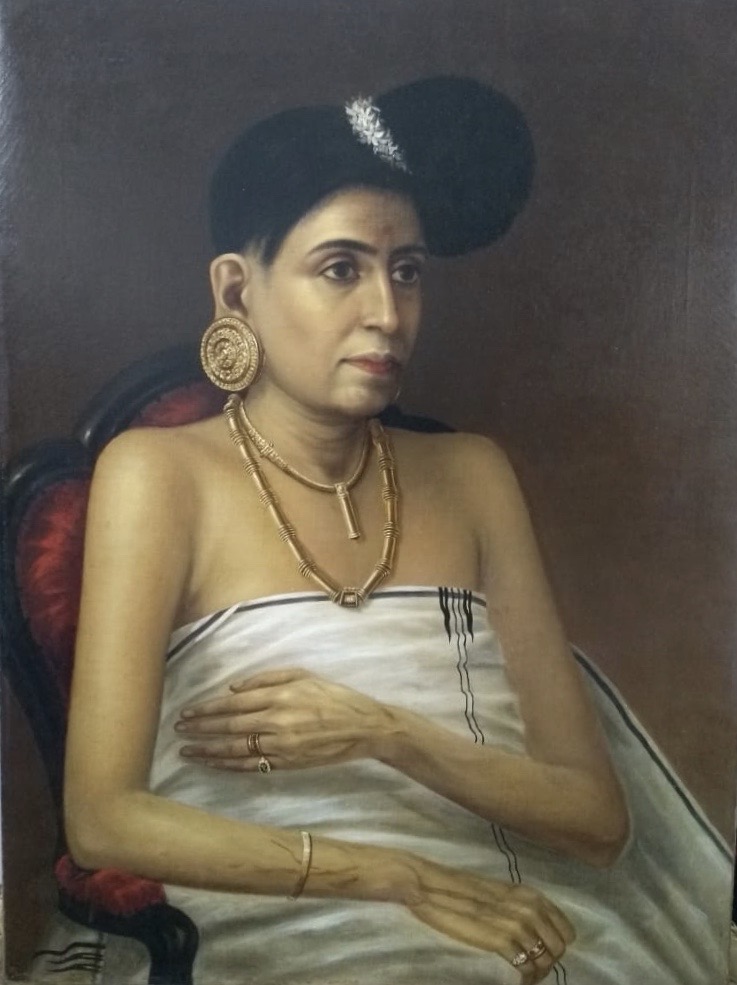
Rani Ikkavu Tampuran
This painting depicts the simplicity of the Cochin royals, in comparison with their peers in Travancore. Even the garb the Rani wears is peculiarly Cochin in style. Traditionally women in Kerala did not cover their torsos, but exposure to the British and Victorian ideals meant that slowly the idea of covering up came into vogue. While the Travancore princesses invented the methukettu, tying a mundu around the torso, in Cochin - as we see with Rani Ikkavu here - a cloth was loosely held against the breasts, and tucked under the arms. This, for many years, was the official dress of princesses of the Cochin royal family, as blouses were taboo.
According to Ravi Achan, the son of a Cochin prince, the royal women even played tennis with a cloth tucked under their arms like this.
This painting is unique in representing a Rani of Cochin in her traditional attire, also because portraits of Cochin's female royals are extremely rare. This painting, which is unsigned, yet bears accurate description and style of art works of Raja Ravi Varma in consideration of subject, colour pallet, soft handling of colours and treatment of humanistic emotions and portrayal of the same, and is hereby certified as a ‘Unsigned Original’.
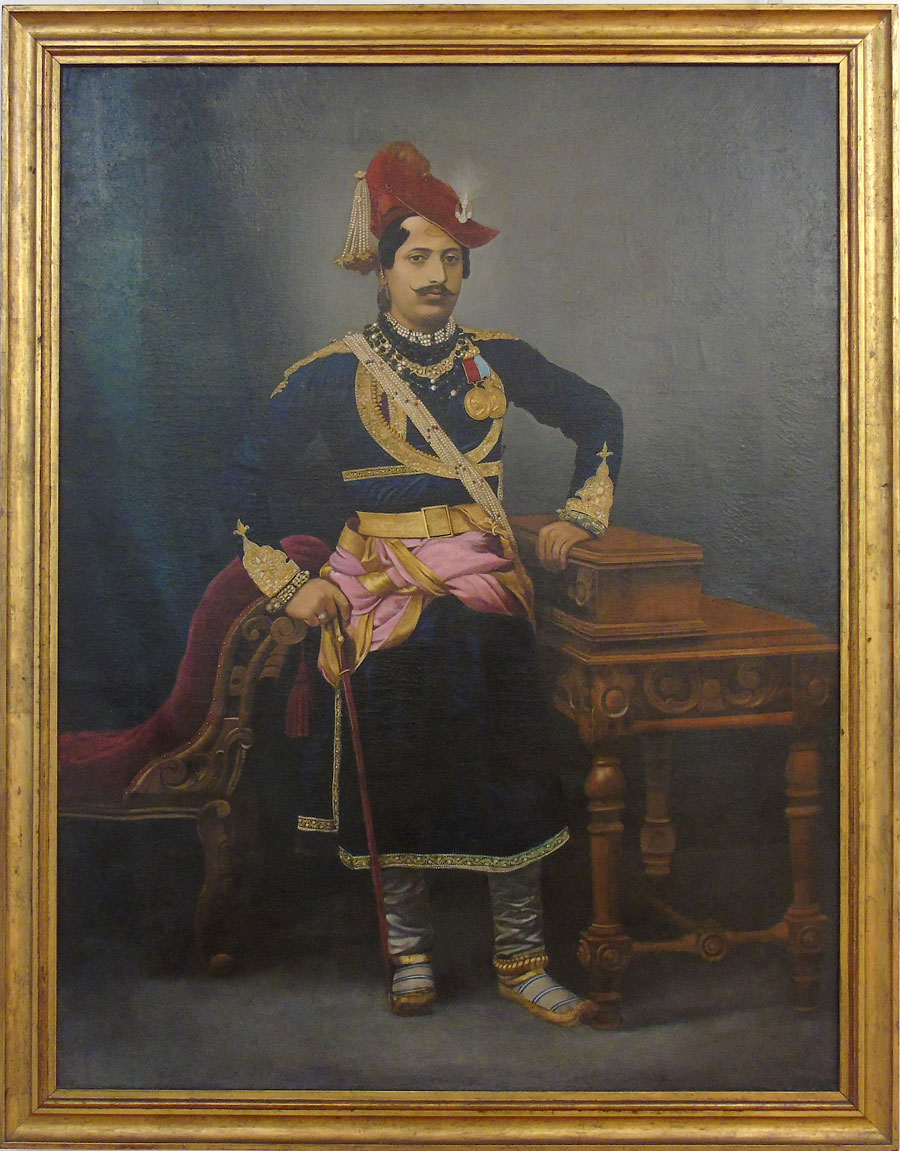
Raja of Dewas
Narayan Rao Puar became the raja of the tiny little state of Dewas (Junior) a few years after his father died in 1864. Born in 1860, he grew up to be a natty young man if this photograph taken by Raja Deen Dayal, circa 1884, is any indication. Narayan Rao was in his twenties at the time and in the prime of his youth. During Ravi Varma's relentless criss-crossing of central India, it is likely that he would have met Narayan Rao in Indore, some 30 miles from Dewas, or perhaps, even in Dewas in the company of Deen Dayal.
Deen Dayal and Ravi Varma were friends and the possibility that this portrait was made during or just after the photography session is strong. Certainly the portrait was made between 1884 and 1890. A photograph that was taken later in 1890 shows a decadent, untidy looking Raja without the dash and swagger that he showed in the painting and in the earlier photograph taken by Raja Deen Dayal in 1884.
After visually and physically inspecting the work it has been concluded that it is a signed original done by the hand of Raja Ravi Varma.
This painting, which is unsigned, yet bears accurate description and style of art works of Raja Ravi Varma in consideration of subject, colour pallet, soft handling of colours and treatment of humanistic emotions and portrayal of the same, and is hereby certified as a ‘Unsigned Original’.
Raja Ravi Varma Heritage Foundation has examined this work and had it registered with the ASI for the present owner.

Portrait of Narayani Pillai
This is portrait of Narayani Pillai, the wife of B A Prince or Aswathi Thirunal Marthanda Varma. This painting hangs in one of the erstwhile Ammaveedu bungalows in Thiruvananthapuram and is a family heirloom that was handed down from father to daughter. Narayani Pillai was the grand aunt of the present owner of the work.
The painting is ‘Unsigned’ but bears characteristics and technical similarities to a ‘work done by the hand of Raja Ravi Varma.’
The Foundation was invited to examine the painting, however the work has not been subjected to x-ray or any physical or chemical testing.
Works that have been physically examined by the Foundation,
not done by Raja Ravi Varma
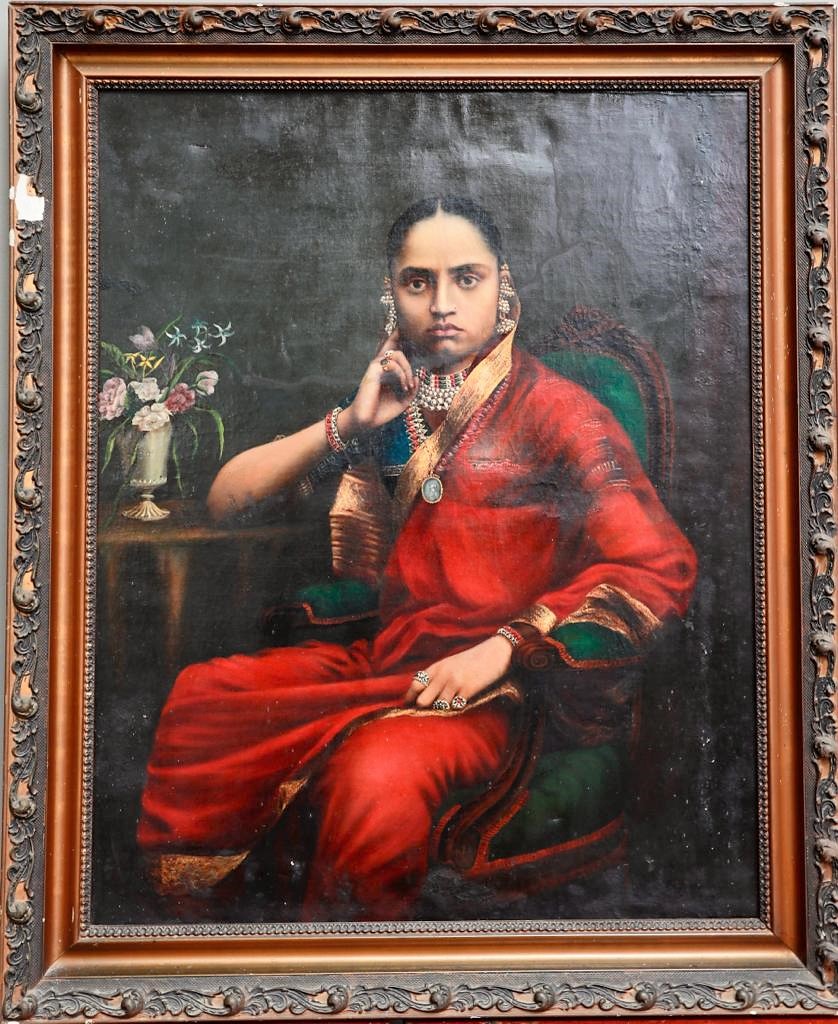
Portrait of Jamna Bai by Cheduvaranga Naidoo
This portrait of Jamna Bai, the Maharani of Baroda, has been painted by court artist R Cheduvaranga Naidoo. Parts of the signature on this painting have been lost due to damages to the canvas. However, during restoration the underlying paint of signature became visible and the name of the artist could be established. This painting has been done by an artist who followed the ‘Style of Raja Ravi Varma.’
A similar portrait of the subject is part of the Baroda Royal Collection.
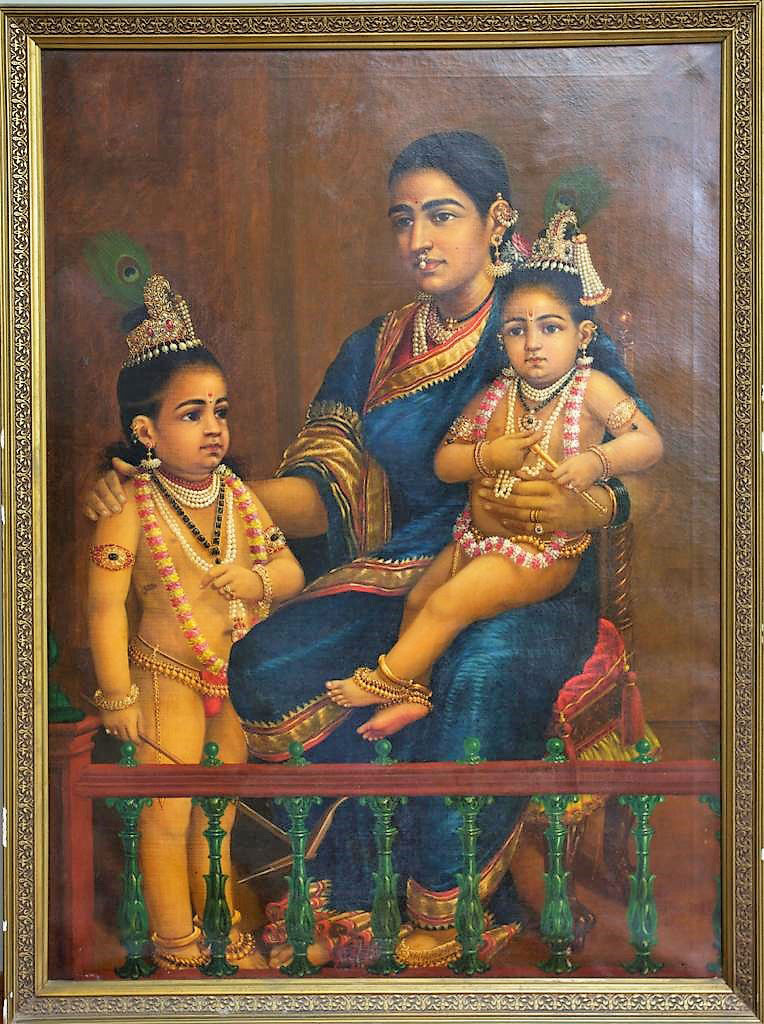
Yashoda with Balarama and Krishna
This large painting of Yashoda with young Balarama and Krishna has been done in a ‘style similar to Raja Ravi Varma’. While the work has been attributed to the master artist based on oral family history, there is no presence of a signature. Upon examination the Foundation was also able to point out certain aspects in proportion and technique that do not entirely match with Ravi Varma’s style of work. Hence this painting is deemed to have been done in the ‘Style of Raja Ravi Varma’.
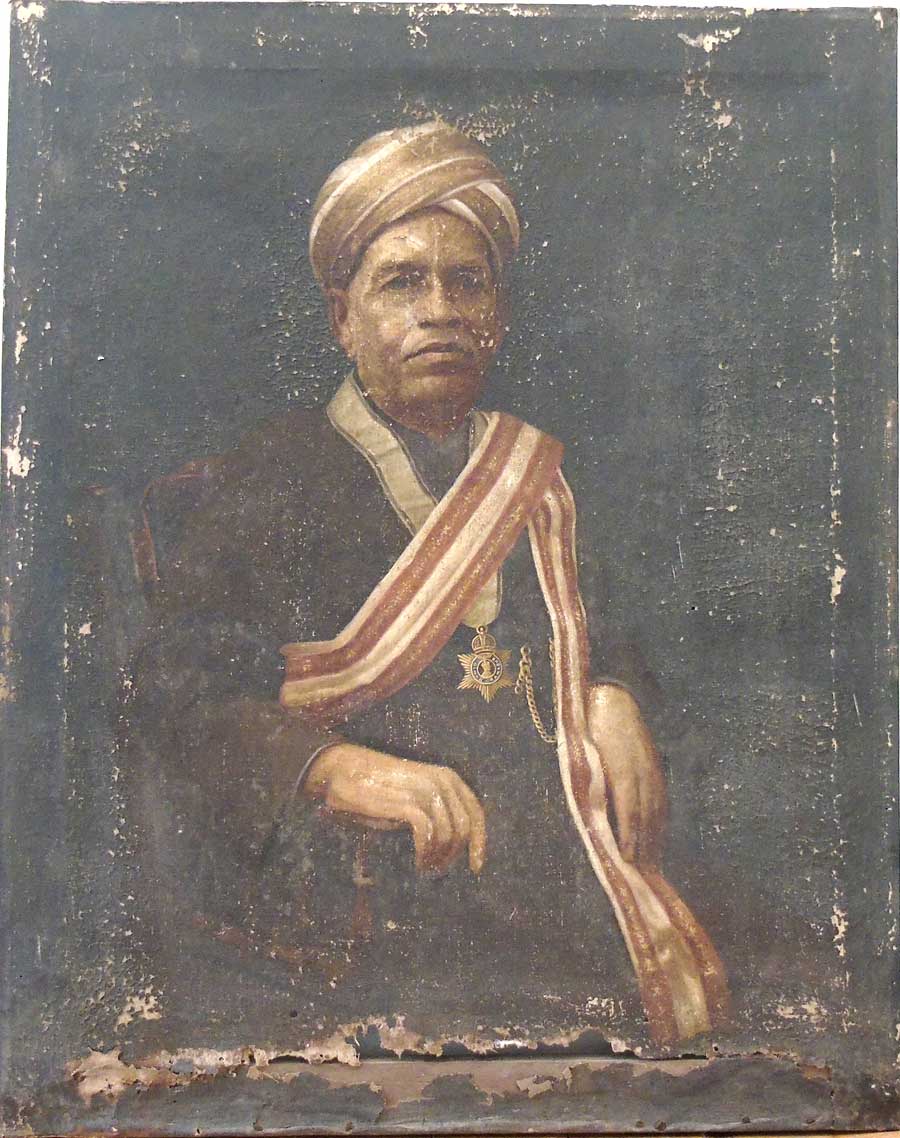
V Nagam Aiyah
The subject in this painting was a senior bureaucrat in Travancore who wrote the Travancore State Manual and was familiar with Raja Ravi Varma and his brother. The painting is presently in the possession of one of the family members.
While closely observing, and taking into consideration all of the facts of analysis, it is hereby concluded that the ‘painting has NOT been done by the hand of Raja Ravi Varma’. It could possibly have been done by some artist of his time, painted in the manner of Raja Ravi Varma, but without a signature.
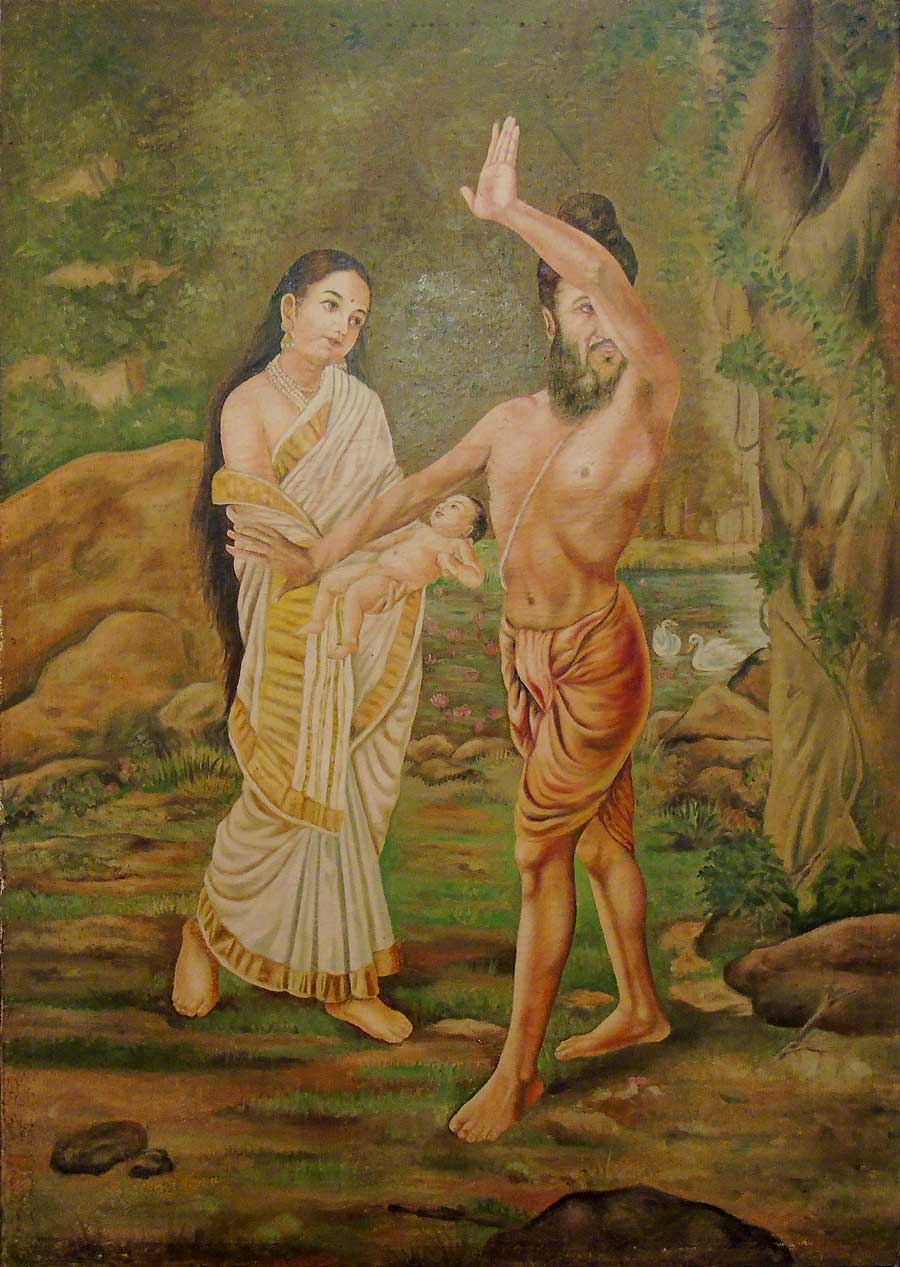
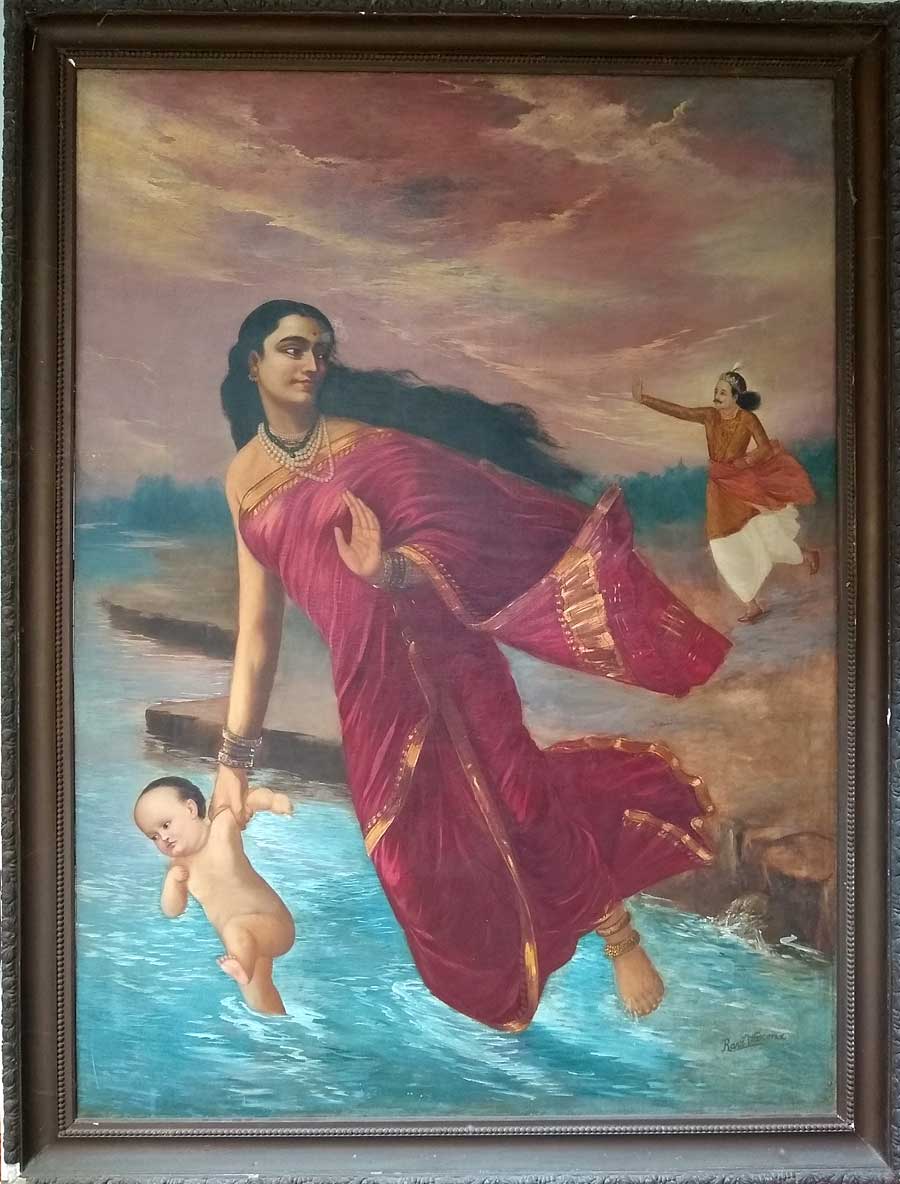
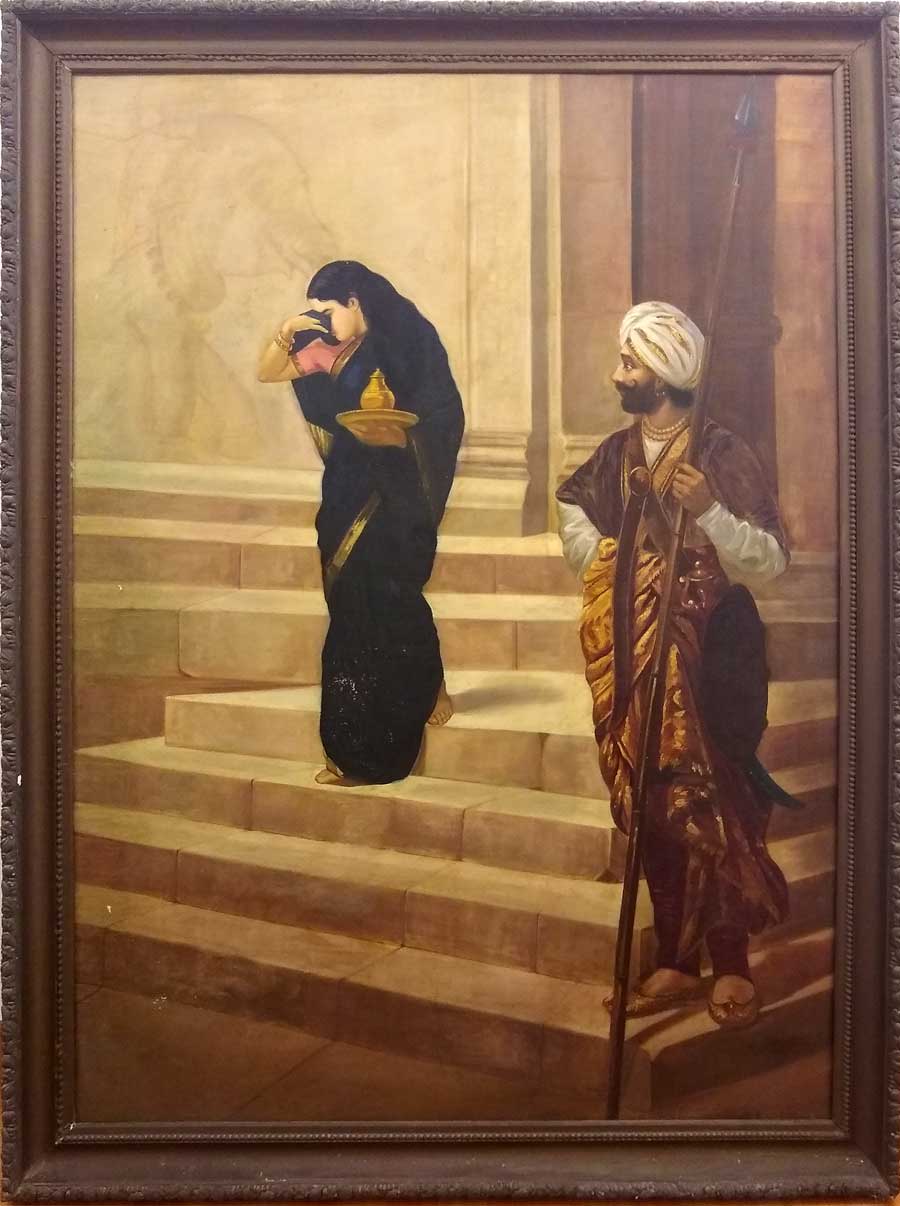
Birth of Shakuntala
Ganga Shantanu
Sairandhri
These works, though done in the style of Raja Ravi Varma and on a similar subject, lacked the finesse and skill of a work done by the master artist. While closely observing, and taking into consideration all of the facts of analysis, it was concluded that these painting ‘have NOT been done by the hand of Raja Ravi Varma’.
They could possibly have been done by some artist of his time, painted in the manner of Raja Ravi Varma, but without a signature. The signature in all these paintings has been added at a later date, which is discernible through X-Ray and UV light exposure.
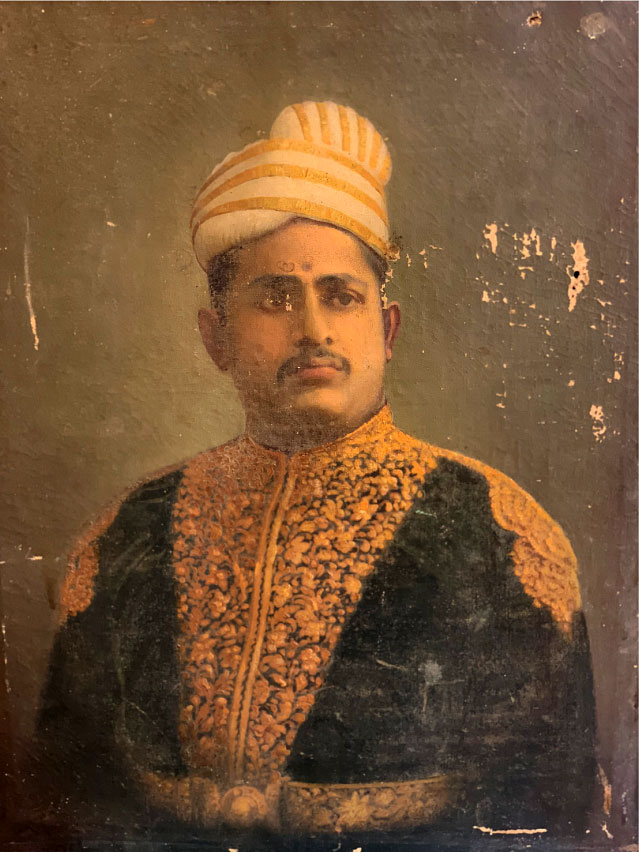
B A Prince
B A Prince died at the age of 29 in 1900. Raja Ravi Varma was an accomplished portrait painter by then. There appear to be several inconsistencies between what the artist could have produced and what the art work looks like.
The Foundation is of the opinion that this portrait of B. A. Prince ‘is done in the manner of the artist but after his lifetime’.
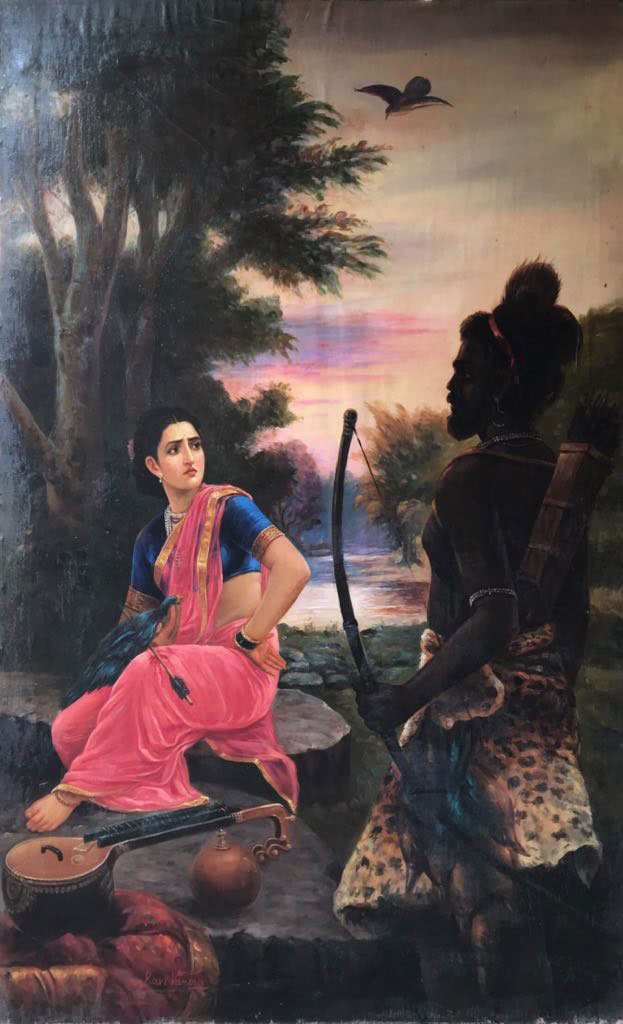
Veena Nu Mrug
A version of the popular work by Ravi Varma featuring a dark-skinned hunter and a fair maiden distressed over an injured bird, this painting shows the female character draped in a bright pink saree, as opposed to the original version showing her in white. While the visible figures have been done in the style and manner of Raja Ravi Varma, the signature appears to have been added later.
Examination under x-ray revealed the figure of a Tibetan Thangka below, clearly indicating that this work has been overpainted on a canvas that at one time bore the figure of this thangka.
It is unlikely that Ravi Varma painted a Tibetan Thangka during his time. This proves that the painting is ‘Not Original and has not been painted by the hand of Raja Ravi Varma’.
Works that have been sent to the Foundation for review,
but not physically examined
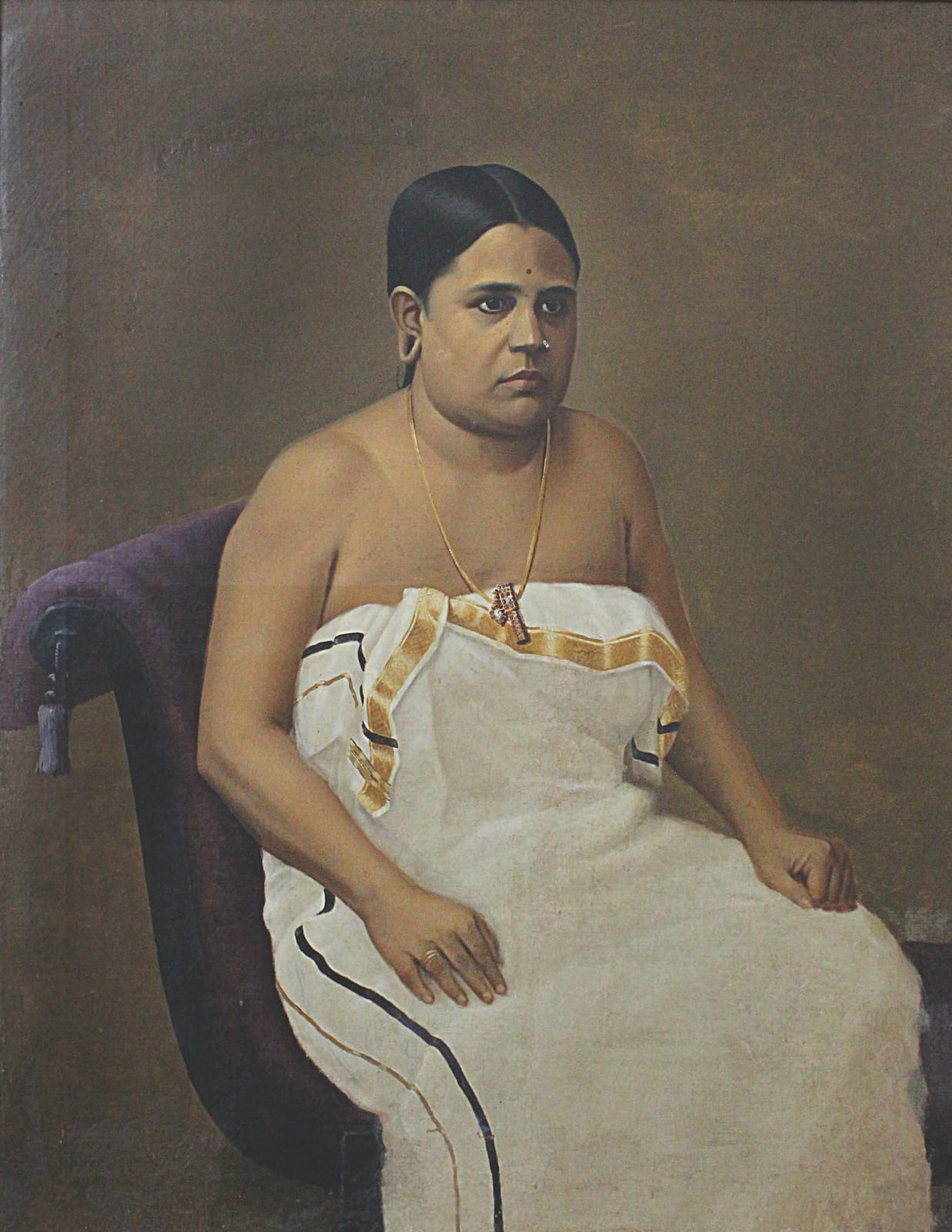
Kaipally Veetil Lakshmi Amma
Recently an interesting portrait of the subject was reviewed by the Foundation. Belonging to a reputed collector, this portrait was believed to be of ‘Pooruruttathi Nal Mahaprabha Amma Thampuran’ or simply ‘Mahaprabha’ the wife of Raja Ravi Varma.
A reference photograph of the subject portrait has been published in ‘Raja Ravi Varma: Portrait of an Artist, The Diary of C. Raja Raja Varma’ by Erwin Neumayer and Christine Schelberger, however with a question mark. It perhaps is indicative that the authors were unclear of the identity.
This same image was shared with the Foundation along with other images of the subject portrait. However, the Foundation was not convinced with the provided information / provenance and researched further. Documented evidence revealed that the subject portrait is not of ‘Mahaprabha’, Raja Ravi Varma’s wife, instead the subject was ‘Kaipally Veetil Lakshmi Amma’, whose daughter Kathyayani Ammachi was the second wife of Maharajah Mulam Thirunal.
When Kathyayani married the Maharajah, her entire family was adopted into the Vadaserri Ammaveedu, and the mother was thereafter called Lakshmi Pillai Thankachi.
Lakshmi Pillai Thankachi’s husband Nadavarambath Krishnan Nair was the manager of Nagercoil Ammaveedu. The photograph attached in the provenance line alongside the portrait was of ‘Ananthalakshmi’ who was from the Nagercoil Ammaveedu.
While the history and story of the Ammaveedus in Travancore is long and complex, the Foundation, through its diligent research, has clearly been able to establish the identity of the subject portrait with documentary and photographic evidence (as attached alongside).
The Foundation has informed the collector of this new evidence.
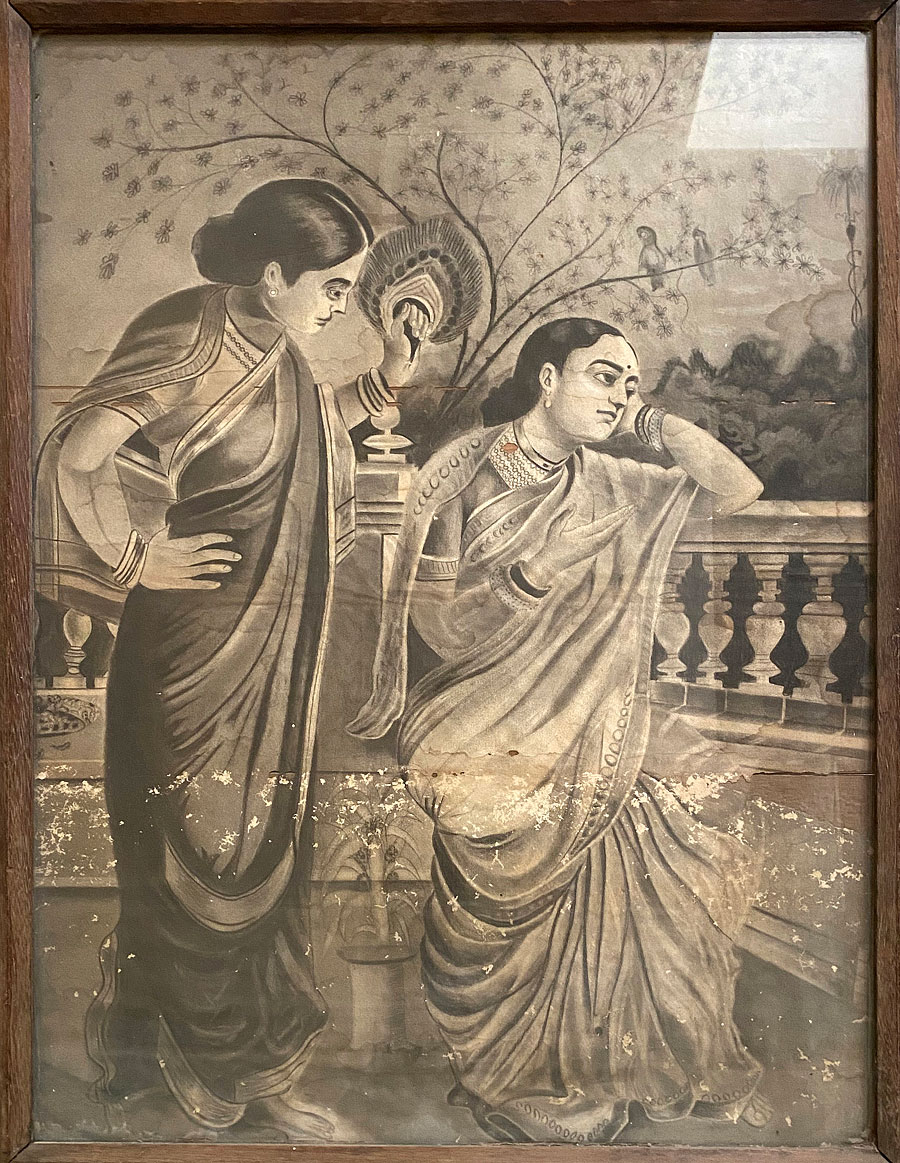
Graphite Sketch
The Foundation reviewed a work similar to ‘Damayanti’ by Raja Ravi Varma, a beautiful oil painting that was sold by Sotheby’s some years ago. While the size and scale of the work was similar to the original painting created by the master artist, this work proved to be one done in graphite.
The Foundation informed the owner that the work was not done by the hand of Raja Ravi Varma.
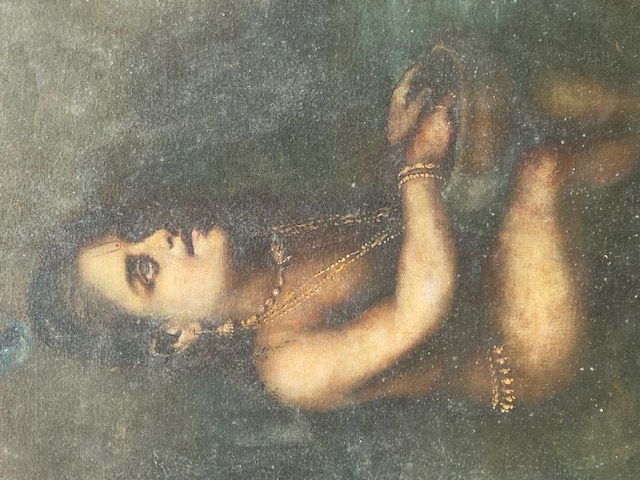
Painting of Krishna
An interesting work of ‘Baby Krishna’ was brought to the Foundation’s attention for review from an illustrious collector in Kolkata. However, upon examining the subject and the style of the work, the Foundation informed the owner that the work was not done by the hand of Raja Ravi Varma.
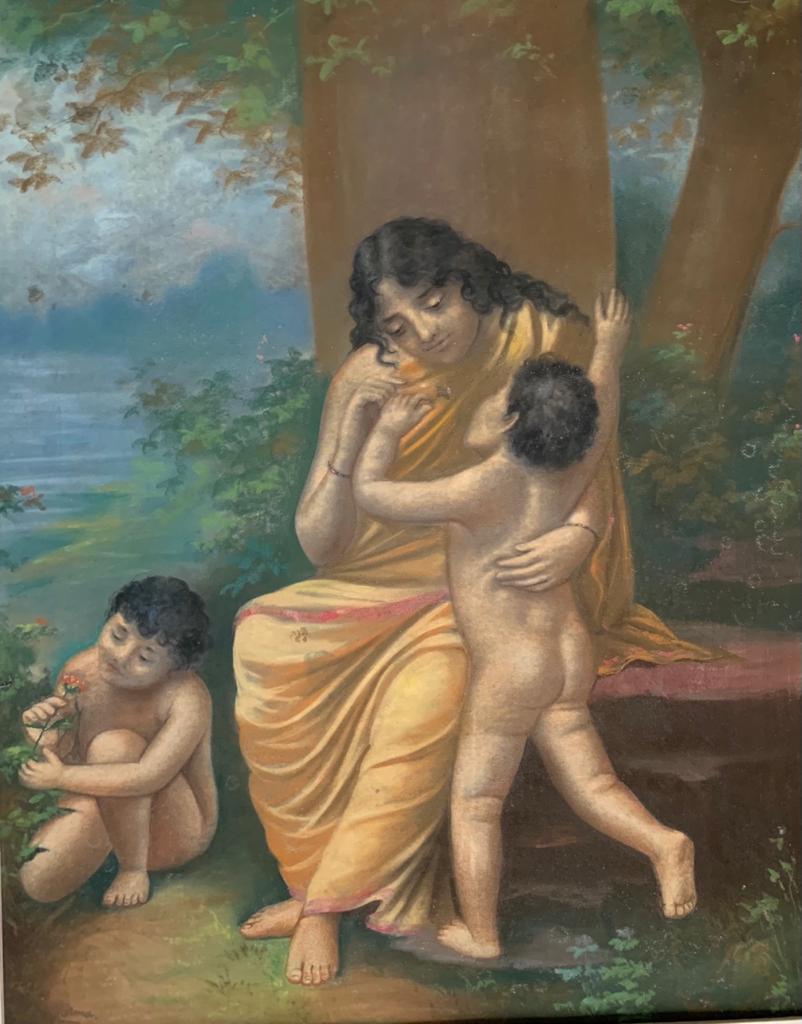
Pastel Work
A well-known collector from Mumbai brought an interesting work from his collection to the attention of the Foundation. While the work itself bore a signature similar to the ones seen in lithographs from the Ravi Varma Press, the medium of this work was different. The collector hired a reputed conservator from India to examine the work, and he concluded that the work had been done on paper with pastels.
While the subject of the work, ‘Mother Sita’ with infants Luv and Kush, is similar thematically to a work by Ravi Varma, the Foundation informed the owner of the difference in painting style, use of material and medium, hence concluding that the work was not done by the hand of Raja Ravi Varma, despite a visible signature/seal.
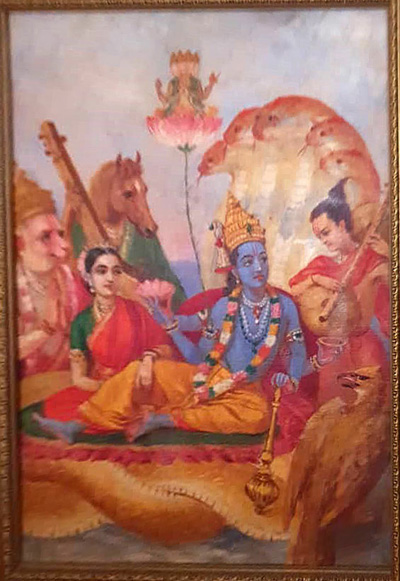
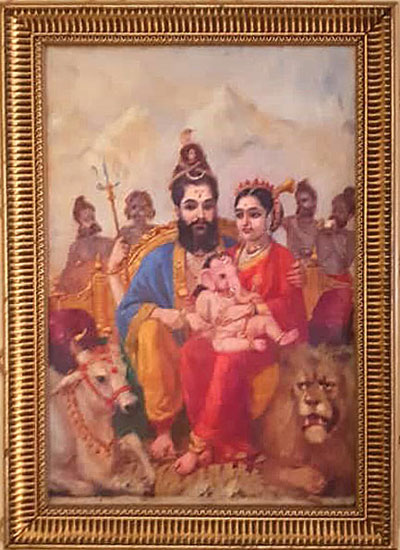
Lithographic Exemplars / Exemplars
Raja Ravi Varma Heritage Foundation were shown a set of 5 lithographic exemplars titled as follows:
- Matsya Avatar
- Varaha Avatar
- Shesha Narayana
- Kurma Avatar
- Shiv Parivar
In October 2018, the Foundation was alerted about four ‘abandoned works by Raja Ravi Varma’ on a private confiscated aircraft in India. After contacting the relevant authorities the Foundation ascertained that there were five and not four works considered to be by Raja Ravi Varma (as seen in the adjoining photographs).
The Foundation was able to impress upon the then owner / custodian of the works that these were important antiquities and should either be donated to a museum, or left behind with a proper authority / institution or individual in India as they were non-exportable.
The Foundation is aware, and holds records, that these paintings had been acquired from an auction house in 2002, who had clearly catalogued these works as ‘Ravi Varma and Studio’. As per Foundation research and records it appears that these five paintings were part of the 90 (approximate) lithographic exemplars that Raja Ravi Varma handed over to his German partner Fritz Schleicher when he sold the Ravi Varma Press to him in 1903.
Hence, the Foundation, in its records, has catalogued these five paintings as ‘Ravi Varma and Studio’.
Post this the Foundation had no further communication with the said owner of the paintings.
In March 2022, the Foundation was informed by art historian, private restorer and scholar Rupika Chawla that the five paintings had been physically examined by her and successfully ‘Attributed to Raja Ravi Varma’ considering the style and nature of the works. The Foundation has noted and recorded her findings. The Foundation is now in contact with the new owner of the works and has updated them on all the research and information gathered on the five paintings.
Miscellaneous

Lithograph of Shakuntala Janm
The Foundation often receives information from people who claim to own ‘original’ paintings by Raja Ravi Varma. Most often they contact the Foundation looking for an avenue to sell or valuate the artwork.
One such call led us to the residence of Manju Bhargavi in Bangalore, who claimed to have an original work of ‘Birth of Shakuntala’. Upon visiting the Bhargavi residence the Foundation team found that the work was a lithograph and not an oil painting. However, the lithograph was old and might have been produced at one of the first established Ravi Varma Presses.
The Foundation team examined the work physically and provided only an oral opinion to the owner.
